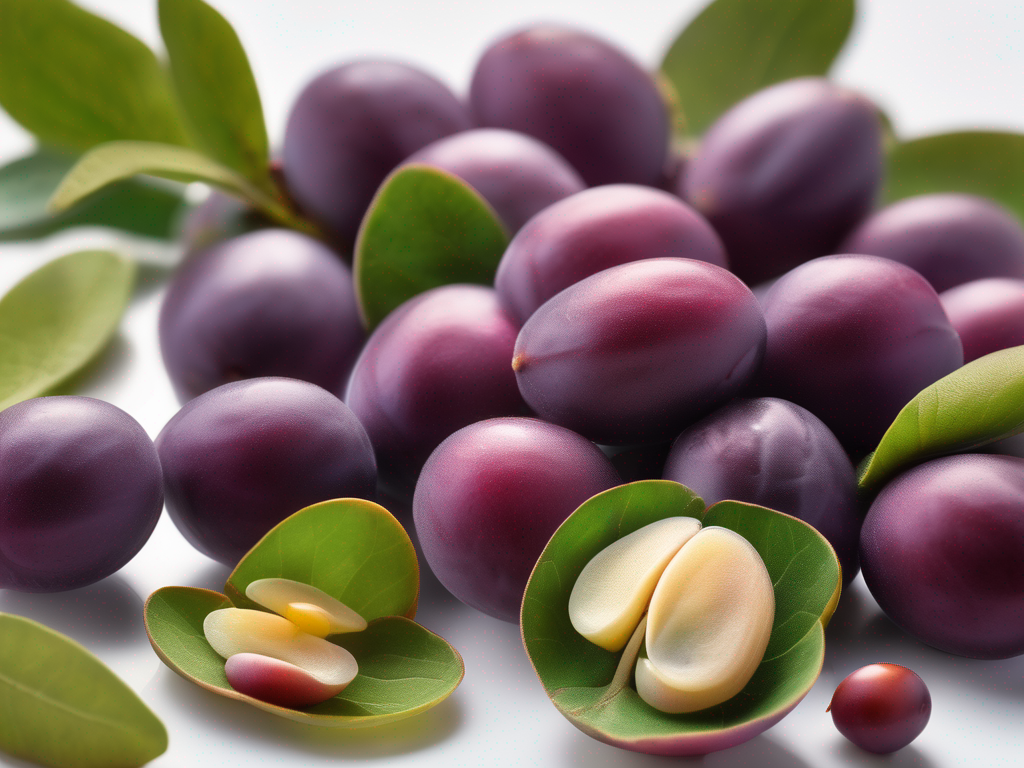
Signs that Natal Plum Has Gone Bad and Should be Discarded
Get Your Free Food Safety Cheat Sheet
30 most common foods with instant answers. Print it and stick it on your fridge—completely free!
Signs that Natal Plum Has Gone Bad and Should be Discarded
Natal Plum, also known as Carissa macrocarpa, is a popular fruit that is enjoyed for its sweet and tangy flavor. However, like any perishable food item, Natal Plum can spoil if not stored properly. In this blog post, we will discuss the signs that indicate Natal Plum has gone bad and should be discarded to ensure food safety. (Natal plum)
Understanding Natal Plum
Before delving into the signs of spoilage, let's briefly discuss Natal Plum and its characteristics. Natal Plum is a small, red fruit that grows on evergreen shrubs native to South Africa. It is rich in Vitamin C, antioxidants, and fiber, making it a nutritious addition to your diet. Natal Plum can be eaten fresh, juiced, or used in jams and desserts.
For more information on Natal Plum, you can check out this [link](/food/natal plum).
Signs of Spoiled Natal Plum
Visual Changes
- Mold or mildew growth on the surface of the fruit
- Discoloration, dark spots, or a slimy texture
- Shrinking or withering of the fruit
- Fuzzy or fuzzy white patches on the skin
Odor
- Foul or off-putting smell
- Fermented or alcoholic odor
- Sour or rancid scent
Texture
- Soft, mushy, or squishy consistency
- Excessive watery or slimy feel
- Tough or leathery skin
Taste
- Bitter or sour taste
- Fermented or alcoholic flavor
- Lack of sweetness or tanginess
Safety Tips for Storing Natal Plum
To prevent Natal Plum from spoiling prematurely, follow these safety tips for proper storage:
- Refrigeration: Store Natal Plum in the refrigerator at temperatures below 40°F (4°C) to extend its shelf life.
- Ventilation: Allow air circulation around the fruit to prevent moisture buildup and mold growth.
- Separation: Keep Natal Plum away from other fruits and vegetables that emit ethylene gas, which can accelerate ripening and spoilage.
- Dry Storage: If ripe, store Natal Plum in a cool, dry place away from direct sunlight to maintain its freshness.
- Use-by Date: Consume Natal Plum before the expiration date mentioned on the packaging or within a few days of purchase for optimal quality.
Conclusion
In conclusion, it is important to be vigilant and attentive to the signs of spoilage in Natal Plum to ensure food safety and prevent foodborne illnesses. By understanding the visual, odor, texture, and taste indicators of spoilage, you can confidently identify when Natal Plum has gone bad and should be discarded. Remember to follow proper storage practices to prolong the freshness of Natal Plum and enjoy its delicious flavor to the fullest. Stay informed, stay safe, and savor the goodness of Natal Plum! (Natal plum)
Authoritative Food Safety References
These agencies and university labs inform every tip and health precaution we publish.
USDA FoodKeeper – Cold Storage Guidelines
Official refrigerator, freezer, and pantry timelines maintained by the U.S. Department of Agriculture.
Visit USDA FoodKeeperFDA Produce Safety Rule & Grower Guidance
Field-to-fridge handling practices that prevent contamination of fruits, vegetables, and leafy greens.
Visit FDA Produce SafetyCDC Foodborne Illness Prevention Hub
Surveillance-backed guidance on pathogens, symptoms, and steps to reduce foodborne illness risk.
Visit CDC Food SafetyUC Davis Postharvest Technology Center
University research detailing optimal storage atmospheres for produce after harvest.
Visit UC Davis PostharvestPenn State Extension – Home Food Preservation & Safety
Peer-reviewed extension bulletins on safe canning, chilling, and reheating practices.
Visit Penn State ExtensionGet Your Free Food Safety Cheat Sheet
30 most common foods with instant answers. Print it and stick it on your fridge—completely free! Want more? Upgrade to the complete guide with 70+ foods.
Scan your food directly and get instant safety info using our AI-powered camera feature.